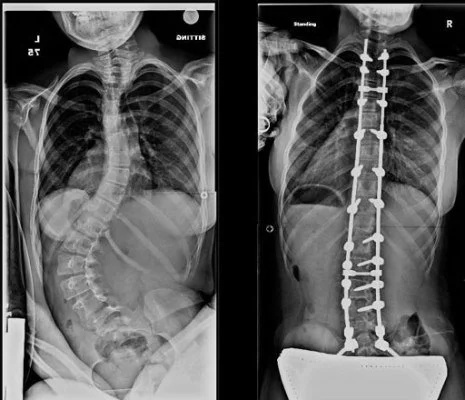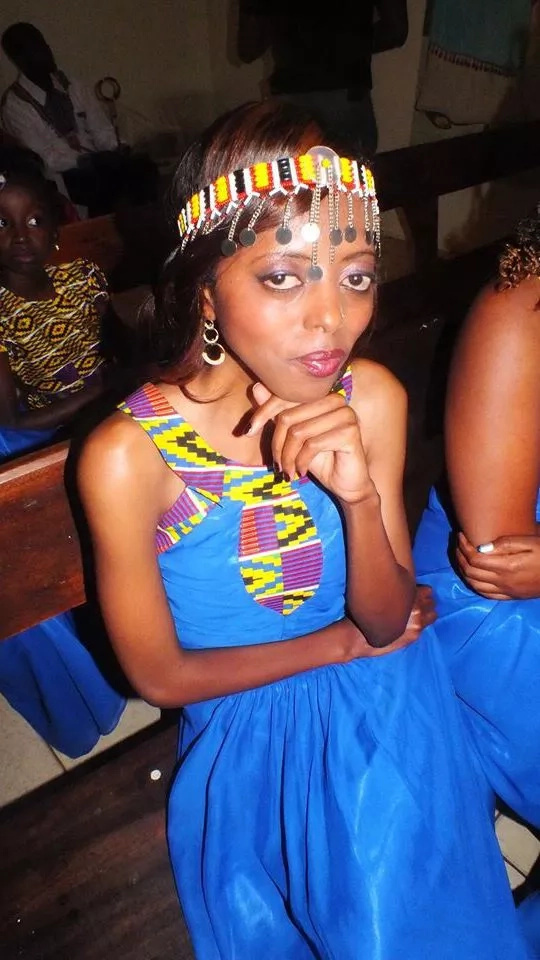Scoliosis is a condition where the spinal cord is bent
– It causes other health related complications and sometimes leads to premature death
– Keziah Wanjau spoke to TUKO.co.ke about her experience of living with scoliosis as well as her surgery and awareness initiative
Out of every one thousand children, three to five of them over the age of ten years develop a spinal curve that is considered serious enough for treatment.

An image showing the difference between people who have and do not have scoliosis. Image: NHS UK
Despite having facilities for diagnosis and rehabilitation, the country is still grappling with issues of surgery.
“Scoliosis is a condition where the spine is not straight. It is bent. It means that part of the spinal cord is not balanced because once you stand up, it bends in one direction forming a letter’ s’ or c. It meand one of the bones is missing and so an operation would be needed to remove the bone on the opposite side of the missing one or add an additional piece- mainly metal- and fit it in the empty space to straighten the spine,” said Dr Vincent Mutiso, an orthopedic surgeon at the Nairobi Hospital.
On the maximum, it can take up to KSh 2 million to treat and rehabilitate one individual with scoliosis as the only facilities to treat this are found in Egypt and South Africa.

Keziah Wanjau at a wedding event.
One scoliosis survivor, Keziah Wanjau, sat down with TUKO.co.ke and told us her story as well as her awareness initiative regarding scoliosis.
“I was diagnosed with scoliosis in 2006 sometime in mid-June and I didn’t realize how serious it was until my curves started progressing. My family decided that we should go see a certain doctor and he recommended surgery. I was scheduled to undergo one in November the same year and it wasn’t easy,”said Keziah.
Her mother, Mary Wanjau, had met Dr Mutiso with whom she talked to about Keziah’s condition and it was through him that Keziah was able to get treatment. The surgery took over eight hours.
“He mentioned that there were some doctors who were coming to the country on a project with Kenyatta National Hospital to do knee and back surgeries. We weren’t sure they would have a spinal surgery doctor but luckily, there was one when they came in September and she had her surgery,” said Mary
She further added that her surgery was a difficult time for her entire family but it brought them together because they were always praying together as they all took turns to spend time with her at the hospital. She has two other children but they do not have scoliosis
“Equipment has been improving with time. Some of it is donated because we get visitors who come to assist us in this kind of endeavor and very often they leave their equipment behind. It is because of this that we have had a buildup of surgical equipment,” added Mutiso.
In making it her life achievement, Keziah set out on a mission to raise scoliosis awareness in Kenya.
“I have this Facebook page, S for Scoliosis Initiative, where I write my scoliosis story as well as encourage others. Apart from that, I got a tattoo on my arm. It’s a scoliosis ribbon with the word hope on it just to show that there is always hope for everything,” said Keziah.
Her mother told TUKO.co.ke that at first they had refused to allow her to have the tattoo done but when Keziah explained her idea, she came on board.
“She probably got the idea from her grandfather who came back with a tattoo after taking part in the war in Burma. She said that whenever someone would ask her what her tattoo meant, she would then talk about scoliosis and raise awareness,” added her mother.
The ‘Bring Zack Home’ campaign which aimed to raise funds to build a spinal rehabilitation center in Kenya was supposed to bring hope to patients suffering from spine related complications.
The initiative however flopped as no facility has been built to date after Kenyans raised millions of shillings.
Had she not gotten treatment, Keziah would have experienced heart and lung complications associated with scoliosis.
The condition is also known to cause premature death in patients.
“People should know there is treatment available. They should not lose hope because they would not have anything to look forward to,” concluded Keziah.
Source : TUKO , May 2016
